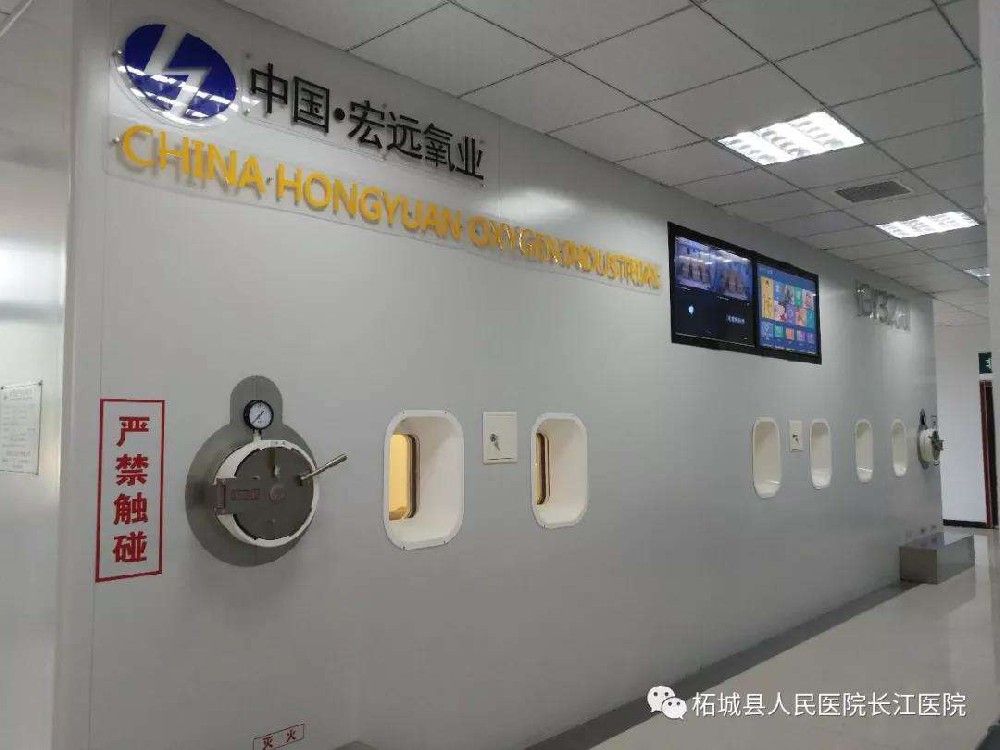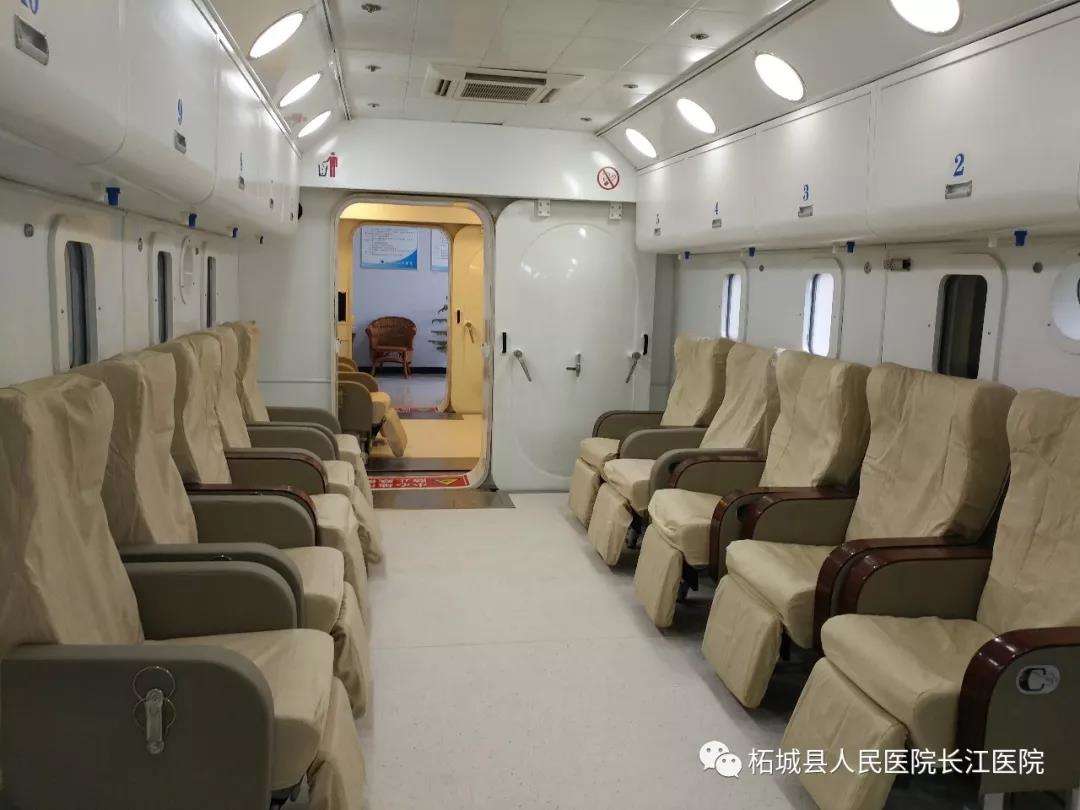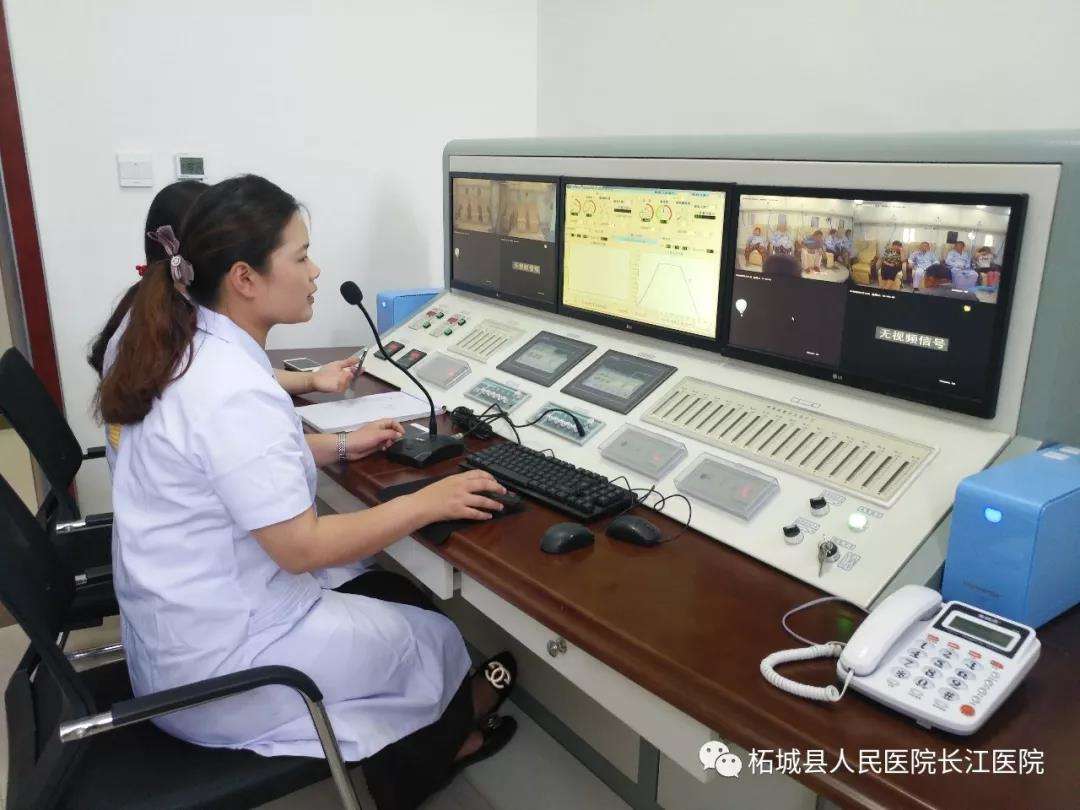



The Department of Hyperbaric Oxygen of the People's Hospital of Zhecheng County has the most advanced large-scale medical high-pressure oxygen cabin group. The cabin group adopts a new flat head and flat bottom structure. The shape design is beautiful and novel; the cabin facilities are advanced in function and complete in decoration. Warm and comfortable; it is a first-class product with advanced design concept and high technical level. It has achieved the breakthrough of traditional oxygen chamber in China. Features: large scale, new equipment, full function, two cabin combination, can accommodate 16 people at the same time. Stretcher carts and wheelchairs can be treated directly into the cabin. The cabin is equipped with a straight-line first-stage oxygen absorption, negative pressure suction, and atomizing inhalation device, which greatly improves the treatment effect of patients with critical coma. The interior and exterior of the cabin are clean and elegant, spacious and bright, with comfortable and adjustable seats in the cabin, central air-conditioning and air conditioning, multi-functional integrated oxygen control device, while enjoying beautiful music and viewing color projection. And equipped with advanced computer automated cabin and safety detection system to ensure patient safety. In addition, it is equipped with an atmospheric pressure mask oxygen absorber and a multi-functional oxygen bar. Under the matching of the modern liquid oxygen supply system, it can meet the needs of different needs of treatment, rehabilitation and health.


Microcirculatory disorder
Such as: cerebral edema, pulmonary edema, crush syndrome, fracture and nonunion, femoral head necrosis, diabetes, foot, limb replantation (referring to).
Anaerobic bacteria and other infectious diseases
Such as: gas gangrene, chronic periodontitis, chronic osteomyelitis.
Such as: sunburst, burns, frostbite, radiation sickness, etc.
Adjuvant therapy increases efficacy
Such as: severe sleep disorders, peptic ulcer, peptic colitis, post-traumatic syndrome, autonomic dysfunction, menopausal syndrome, chronic glomerulonephritis, malignant tumor (radiation or chemotherapy combined with a sensitizing effect), Mental workers relieve brain fatigue, fitness for the elderly, and perinatal care for pregnant women.
What is a hyperbaric oxygen chamber?
The hyperbaric oxygen chamber is a special medical device that can provide a high-pressure environment to ensure that patients can effectively, comfortably and safely inhale oxygen in a high-pressure environment to treat diseases.
What is the difference between oxygen absorption under normal pressure and oxygen absorption under high pressure?
The difference between oxygen absorption under atmospheric pressure and oxygen absorption under high pressure is:
1. The required equipment is different. Oxygen is absorbed under normal pressure. The patient is required to use a nasal cannula or a mask or a respirator to absorb oxygen under an atmospheric pressure or atmospheric pressure. In the case of oxygen inhalation under high pressure, the patient is required to inhale a pure or high-concentration oxygen partial pressure of more than 100 KPa under high pressure in a special hyperbaric oxygen chamber, which has special curative effect on various diseases.
2. The concentration of inhaled oxygen is different. Oxygen is absorbed under normal pressure. The oxygen concentration is generally between 40% and 55%, while the high-pressure inhaled oxygen concentration is between 85% and 99%.
3, Effect is not the same, under normal pressure, oxygen can not achieve the effect of oxygen absorption under high pressure. Oxygen absorption under high pressure can increase the oxygen content of oxygen in the oxygen absorber several times or more than tens of times under normal pressure, which is not achieved by oxygen at normal pressure. Atmospheric oxygen therapy only has a therapeutic effect on hypoxemia, and hyperbaric oxygen has five direct effects and regulation on the whole body system, in addition to increasing the oxygen saturation effect to dozens of times of atmospheric oxygen. Atmospheric oxygen cannot be achieved. Therefore, hyperbaric oxygen has more than one hundred indications, while atmospheric oxygen is only suitable for hypoxemia. In short, the direct effect of high-pressure oxygen on the body: the physical dissolved oxygen in the body increases, the penetration of oxygen increases, the oxygen reserve increases, inhibits anaerobic bacteria, and compresses air bubbles in the body.
What are the benefits of inhaling hyperbaric oxygen?
In general, hyperbaric oxygen therapy can achieve good results in all kinds of diseases caused by hypoxia, ischemic diseases, or a series of diseases caused by hypoxia and ischemia; some infectious diseases and autoimmune diseases, hyperbaric oxygen therapy Can also achieve better results.

There are many indications for hyperbaric oxygen therapy, and the diseases with better curative effect are:
1, various poisoning, such as CO poisoning, carbon dioxide poisoning, hydrogen sulfide poisoning, hydride poisoning, ammonia poisoning, phosgene poisoning, pesticide poisoning, chemical poisoning and so on.
2, sputum, self-sufficiency, electric shock, anesthesia accident and other causes of cerebral hypoxia, cerebral edema, decompression sickness.
3, cardiovascular system: coronary heart disease, angina pectoris, myocardial infarction, cardiogenic shock.
4, digestive system: stomach, duodenal ulcer, postoperative ulcers.
5, infection: gas gangrene, tetanus and other anaerobic infections, viral encephalitis.
6, air embolism.
7, cerebral thrombosis, cerebral embolism, brain atrophy, cerebral insufficiency, brain contusion, post-traumatic syndrome, osteomyelitis, paraplegia, peripheral nerve injury, polyneuritis.
8, skin transplantation, limb replantation (referred to) replantation, vasculitis, refractory ulcer, osteofascial compartment syndrome, postoperative wound healing, arterial embolism, poor bone healing, radiation osteomyelitis, crush injury .
9, neonatal asphyxia, cerebral palsy before the age of 3, etc.
10, central retinal choroiditis, retinal artery embolism, sudden deafness, periodontitis, oral ulcers.
11, dermatological diseases: pityriasis rosea, common azole, nodular erythema, scleroderma, neurological or diabetic dermatitis and so on.

